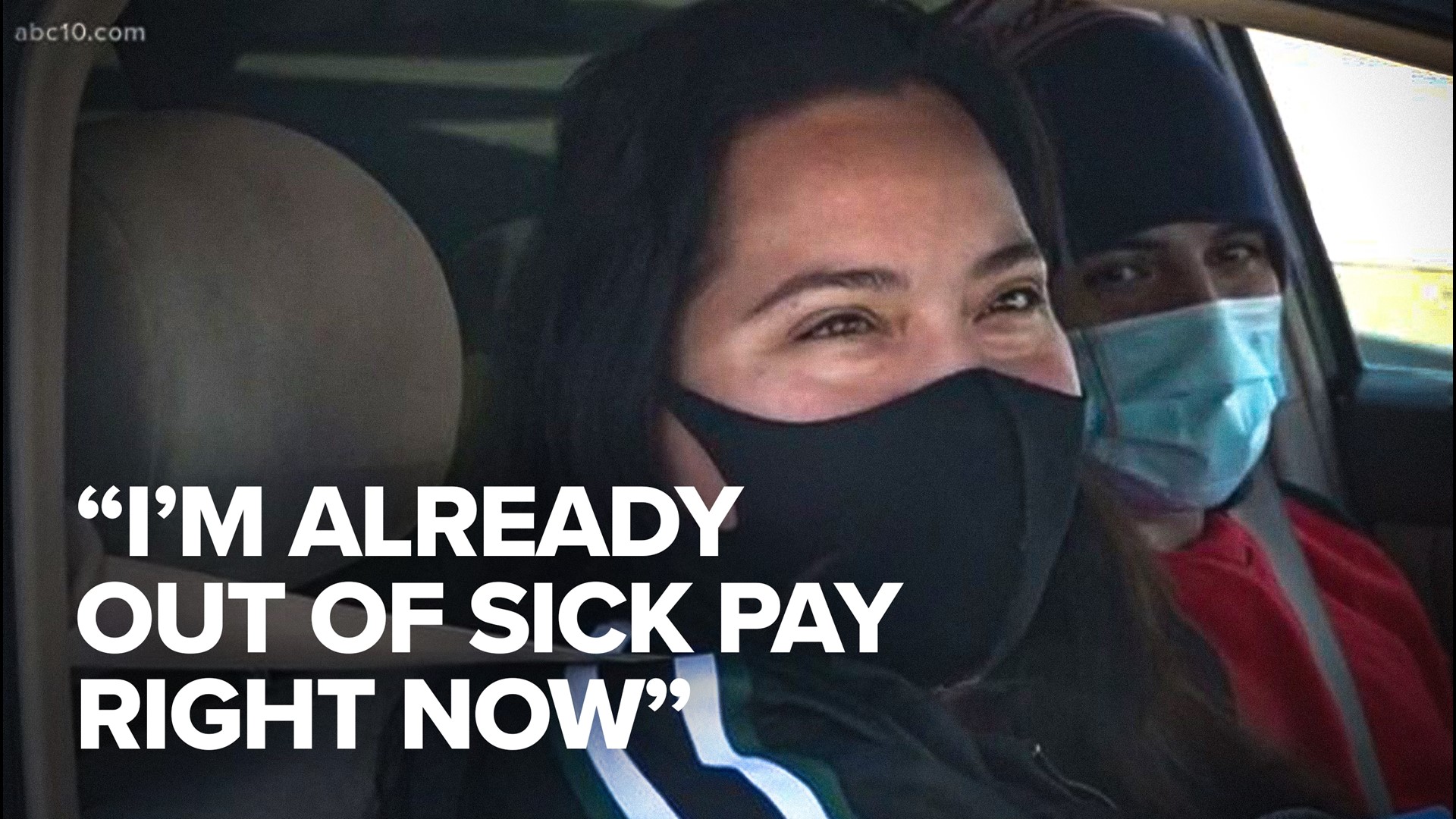SACRAMENTO, Calif. — This story was originally published by CalMatters.
California workers will soon again have access to as much as two weeks paid time off for COVID-related sick leave, under a deal announced today by the governor and legislative leaders.
The agreement comes amid the continued omicron surge and the resulting labor shortage across the state’s workforce, including health care, schools and public transit. And it may be just in time: The number of Californians who were not working in the last month because they or a family member had COVID-19 increased by 320%, according to a California Budget and Policy Center analysis of census data.
California workers have been without extra paid time off for COVID – on top of just three days of regular paid sick leave – since a statewide program ended Sept. 30. But the pandemic has peaked again since then. And labor groups and advocates have been lobbying for months to restore it.
Under the deal negotiated by Gov. Gavin Newsom, Senate President Pro Tem Toni Atkins and Assembly Speaker Anthony Rendon, the new leave program will be retroactive to Jan. 1 and extend through Sept. 30.
In his budget proposal on Jan. 10, Newsom said he wanted the leave reinstated, though details were unclear. With the agreement, the Legislature will act on Newsom’s emergency budget request for COVID-related programs, well before the regular budget is approved in June.
One of the key negotiating points was to offset the costs to businesses, especially smaller ones. As with the previous leave, the new leave only covers employers with 26 or more workers, and the state will provide tax credits to companies.
“California’s ability to take early budget action will protect workers and provide real relief to businesses reeling from this latest surge,” the joint announcement said. “By extending sick leave to frontline workers with COVID and providing support for California businesses, we can help protect the health of our workforce, while also ensuring that businesses and our economy are able to thrive.”
Here’s what we know about the deal so far:
Who can use the leave?
Any full-time employee of a company that has 26 or more workers is entitled to 40 hours of paid leave due to COVID. That doesn’t cover getting the vaccine or recovering from side effects: in that instance, a worker gets 24 hours.
But to get an additional 40 hours of paid leave, workers would have to show proof that they or a family member has tested positive. This provision is apparently to address concerns from the California Chamber about possible fraud by employees. Employers must pay for and provide the test. If a worker refuses to take a test or show a positive test result, no additional sick leave will be granted.
Under current health guidelines, anyone who tests positive should quarantine for five days, regardless of vaccination status. While the number of daily cases has dipped to an average of 95,000, that’s still significantly more than during the delta variant surge last year.
The leave will be retroactive to any time off starting Jan. 1. But making only employees at larger businesses eligible leaves out three in 10 workers, the budget center says.
What do businesses get?
Last year, they were reimbursed for the supplemental paid leave with a federal tax credit, which is no longer available.
This time, businesses will have to absorb the costs, but they will be helped by restoring tax credits for research and development and net operating losses, through tax relief for recipients of federal relief grants for restaurants and shuttered venues and additional funding for more small business grants.
Cal Chamber President and CEO Jennifer Barrera said any new sick leave mandate should be limited in duration, have “reasonable parameters” and shouldn’t overly burden businesses.
“Employers are committed to the safety of their employees and the workplace and are well aware of the broad public health consequences of the COVID-19 pandemic,” Barrera said in a statement. “But elected leaders must ensure a balanced policy so that private sector employers, who are also struggling to remain afloat during these surges and the broader pandemic, are not unfairly shouldering the cost of COVID-19.”
What do labor groups say?
Unions representing workers in industries including healthcare and foodservice applauded the deal.
“We know we can’t wait for employers to keep us safe – we have to advocate for ourselves, and Governor Newsom and legislators listened,” said Bob Schoonover, president of SEIU California. “SEIU members feel proud to have been a part of this critical decision that protects our communities – working people and people of color, who have been at the frontlines as we battle this virus.”
The United Food and Commercial Workers Western States Council said that workers can stay home without the fear of losing two weeks of pay, or their job.
“Paid sick leave is an essential part of public health and we urge Governor Newsom and our legislative champions to act immediately to sign a bill into law ensuring workers can access this basic benefit working people need to stay safe and healthy.”
Labor unions are key supporters of Democratic officials, and their volunteers and money will be at a premium for legislators and the governor in this year’s elections. Last year, SEIU contributed $6.6 million to help Newsom defeat the recall effort.



















